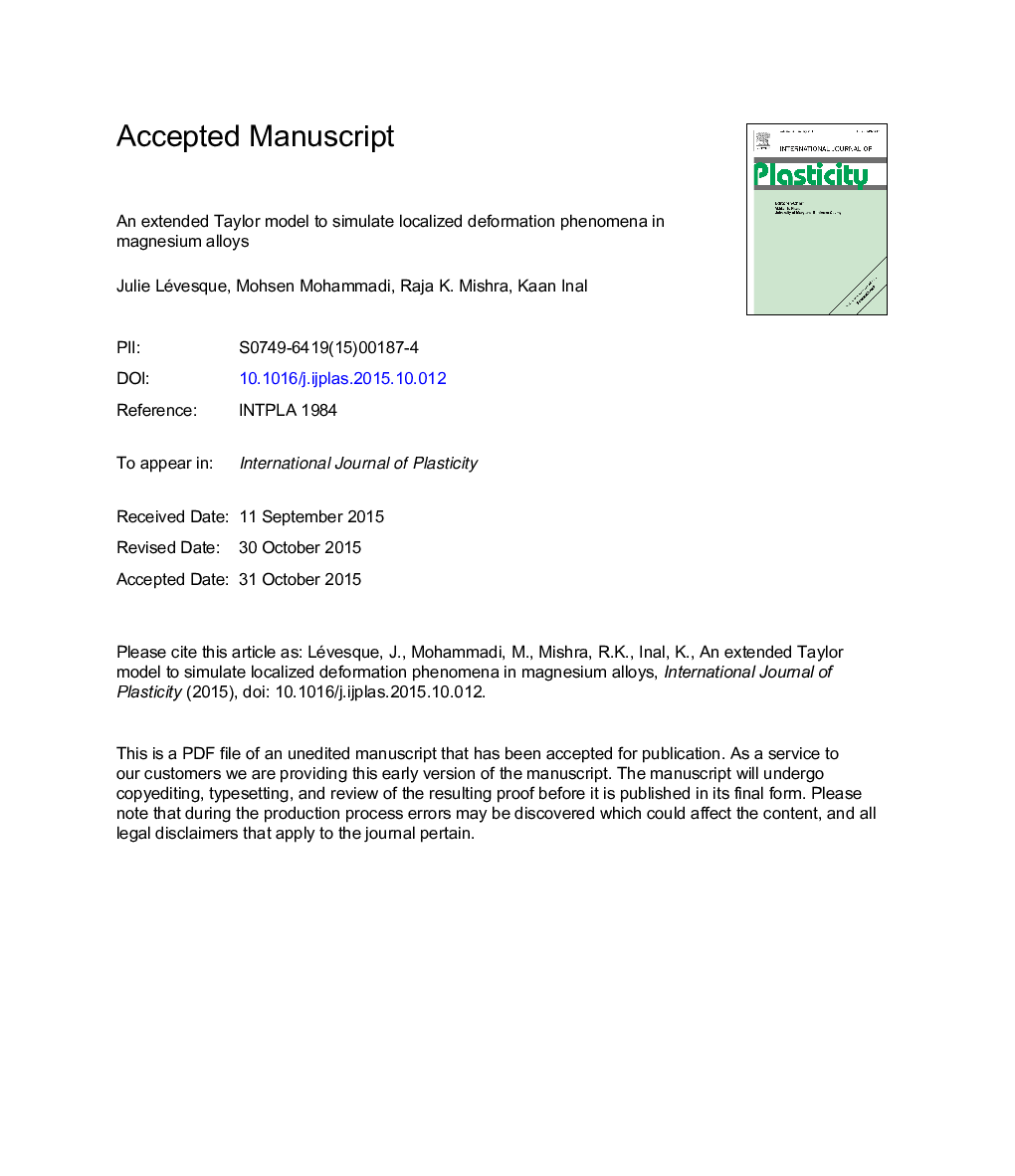| Article ID | Journal | Published Year | Pages | File Type |
|---|---|---|---|---|
| 7174932 | International Journal of Plasticity | 2016 | 71 Pages |
Abstract
In this paper, a constitutive framework based on a rate-dependent crystal plasticity theory is employed to simulate localized deformation phenomena in hexagonal closed-packed (HCP) metals such as magnesium. A new and simplified method to account for deformation twinning is proposed. The new framework allows the twinned zones and the parent matrix to rotate independently. This is an extension of an earlier model presented by Lévesque et al. (2010). Simulations are performed on AM30 and AZ31B magnesium alloys using the new crystal plasticity model where crystallographic slip and deformation twinning are the principal deformation mechanisms. Different simulations such as tension, compression, and forming limit diagram (FLD) calculations are performed to compare the results of the new formulation with the conventional method presented earlier. In addition, the effect of the material texture on formability using the new formulation is assessed. It is shown that the new framework leads to different forming limit diagrams (FLDs) and the FLD resulted from the new framework predicts higher formability. It is understood that, the new formulation accommodates higher slip activity and more realistic twin-parent interactions.
Keywords
Related Topics
Physical Sciences and Engineering
Engineering
Mechanical Engineering
Authors
Julie Lévesque, Mohsen Mohammadi, Raja K. Mishra, Kaan Inal,
